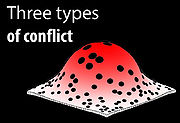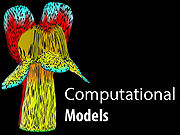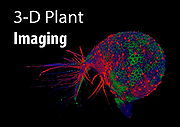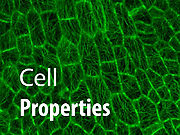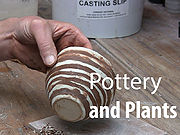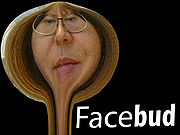How do plants create their amazing shapes? Every flower and leaf starts as a microscopic lump that somehow turns itself into an elegant shape. The secret behind this process of self-making lies in resolving conflicts between different regions of plant tissues trying to grow in different ways. You can see similar conflicts in action with shrinking plastic, curling paper and curling cellophane. For plants, three types of conflict are put in place by patterns of gene activity which influence growth by affecting cell properties. Genetically marking cells with different colours can reveal growth patterns, just as using different coloured clays can reveal deformations during pottery (pottery and plants). Using 3-D plant imaging and growth analysis, we are developing computational models that show how conflict resolutions lead to the beautiful plant shapes we see around us. Our understanding and fascination with the origins, formation and beauty of shape is leading to fruitful collaborations with artists.
Try creating your own conflicts with “Choose Your Conflicts” and see how a face deforms when it grows like a leaf in “Facebud“.
Find out more
Learn more about the science and history in 2016 Croonian Medal Lecture.
References
- Generation of shape complexity through tissue conflict resolution
- Ectopic KNOX Expression Affects Plant Development by Altering Tissue Cell Polarity and Identity
- Fruit shape diversity in the Brassicaceae is generated by varying patterns of anisotropy
- Formation of polarity convergences underlying shoot outgrowths

